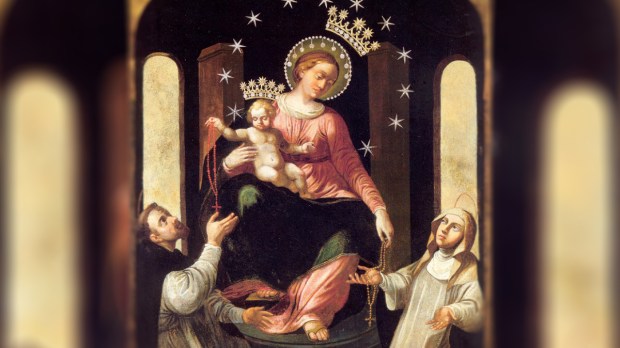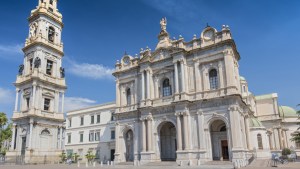The devotion to Our Lady of the Rosary at Pompeii traces to Blessed Bartolo Longo, who converted from satanism and became, as John Paul II said at his beatification, “a man of Mary.”
Bartolo felt Our Lady tell him that his path to heaven was through teaching others to pray the Rosary.
Bartolo moved to Pompeii, where he began Rosary groups, organized Marian processions, and began work on a shrine to Our Lady of the Rosary. His work was funded by the Countess di Fusco, with whom he worked so closely that rumors began to spread about the nature of their relationship. Though Bartolo had taken a private vow of chastity, he was encouraged by Pope Leo XIII to marry the countess for the sake of the work; the two entered into a celibate marriage and continued to serve the poor.
For more than 50 years, Bartolo preached the Rosary, founded schools for the poor, established orphanages for the children of criminals, and transformed a city of death to a city dedicated to the living Mother of God.
A special prayer is said twice a year at Pompeii, telling her, “O Queen … We shall not leave You until You have blessed us.”
Find the prayer here.
May 8 was chosen because it was the feast day of the Apparition of St. Michael the Archangel on Mount Gargano in Puglia, Blessed Longo’s region of origin. The other date is the first Sunday of October, month of the Rosary.
On May 8, 2024, Pope Francis noted the day to say the prayer, especially inviting the faithful to pray for peace:
Today the Church raises the prayer of “Supplication” to Our Lady of the Rosary of Pompeii. I invite everyone to invoke Mary’s intercession, that the Lord may grant peace to the whole world, especially to the dear and tormented Ukraine, Palestine, and Israel, and Myanmar.


